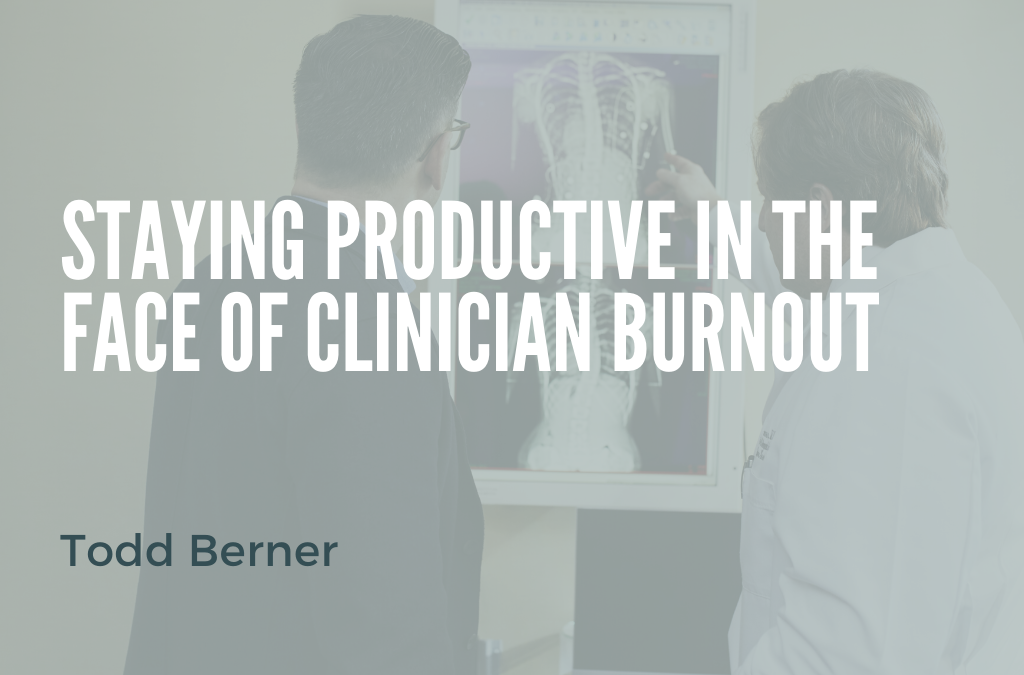As the healthcare industry goes through rapid changes in an effort to provide more data-driven care, physician burnout has only increased. Though burnout can affect professionals in any industry, it affects 83 percent of hospitals, causing long-term stress, exhaustion, and depersonalization. Burnout among physicians is in part due to the data entry that modern healthcare demands; a primary care physician may spend six hours a day updating EHRs in order to meet organizational and legal standards. On top of that, quality and performance standards for organizations create another time sink for healthcare professionals. This, in turn, leads to physicians being able to spend less time with their patients and deliver quality care.
The start to organizations addressing burnout is their recognition that each physician is an investment—that is to say, that they bring in long-term value to any healthcare organization. Working to improve their well-being is worthwhile on an individual and organizational level. Additionally, burnout has a significant impact on the patient experience. If a doctor is too depersonalized to have important conversations about a patient’s lifestyle or well-being, they’re not able to effectively do their job, which may lead to worse outcomes. The long-term effects of burnout often drive physicians to retire early or seek a position outside of a clinic.
For that matter, clerical tasks deviate significantly from the practice of patient care that drives many individuals to become physicians. The never-ending workload of documentation may make them feel their work is insignificant or not impactful. Job satisfaction often hinges on strong patient relationships, and physicians are simply not given the time to build them in a modern healthcare environment.
With all of this in mind, it’s easy to see that addressing physician burnout is not only valuable to them, but to healthcare organizations and patients. While data-driven healthcare can have a positive impact on macro population health, it fails to account for the human elements that uphold it, particularly considering the labor costs involved to update hospital infrastructure and keep documentation current.
In the short term, organizations should consider ways for their physicians to maintain their empathy in the face of mounting administrative tasks. Maximizing face time with patients is often the way to do this, connecting them to the people that they’re serving in the midst of a more impersonal approach to healthcare. Organizations can provide them with resources necessary to mitigate burnout and provide generous benefits to keep their jobs from encroaching on their day to day lives.
On an organizational level, team-based care has allowed for facilities to leverage physician assistants and other medical personnel to share the burden of documentation. While it is a balancing act to prevent other employees from feeling the same strain, maximizing the time that every staff member is using on tasks related to their skill sets can have a universally positive effect on morale and patient engagement.
It’s also worth reconsidering the clunky nature of EHRs, which are time-consuming to maintain and often fail to adequately address the determinants of health in patients. When patient care feels more like checking boxes than maintaining a relationship, that’s a good sign that something needs to change.
